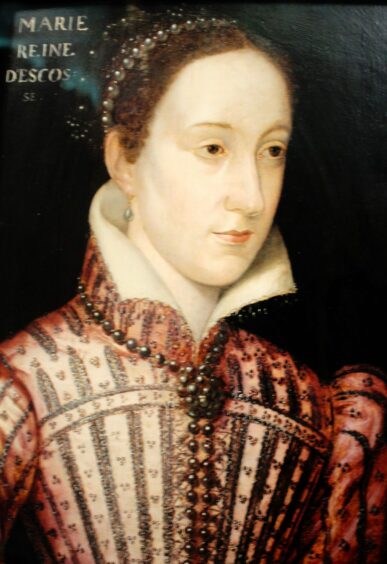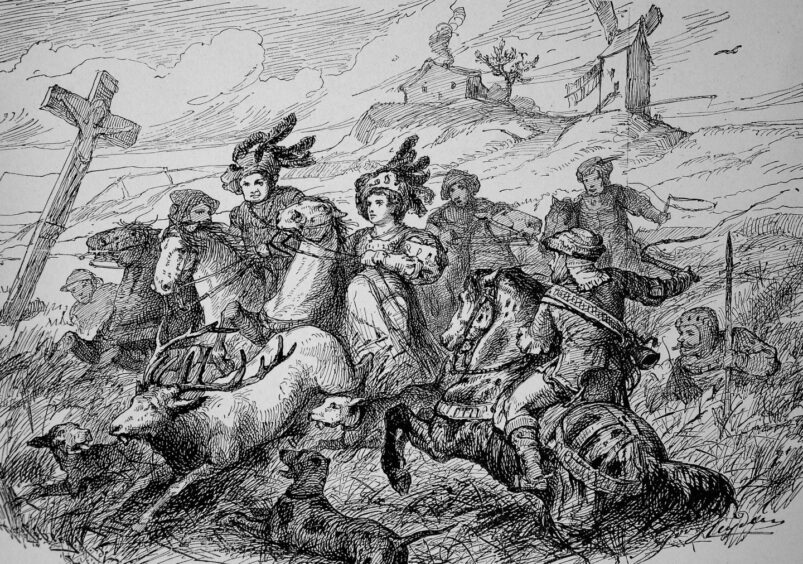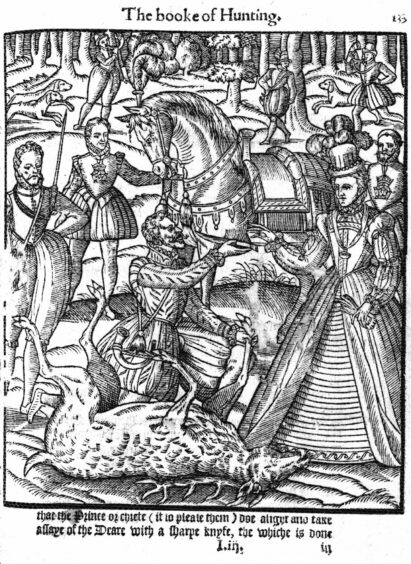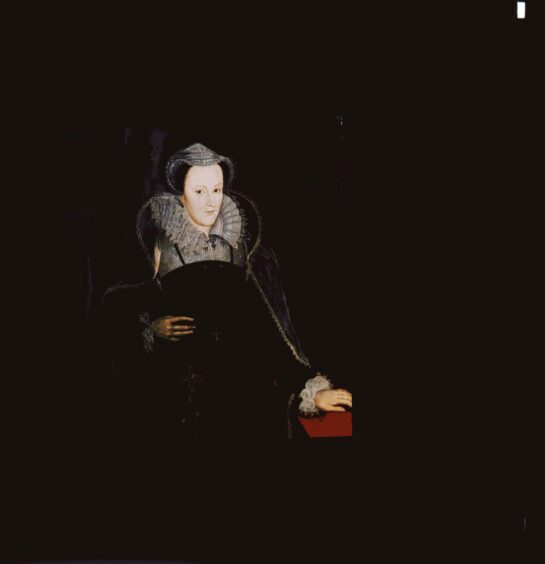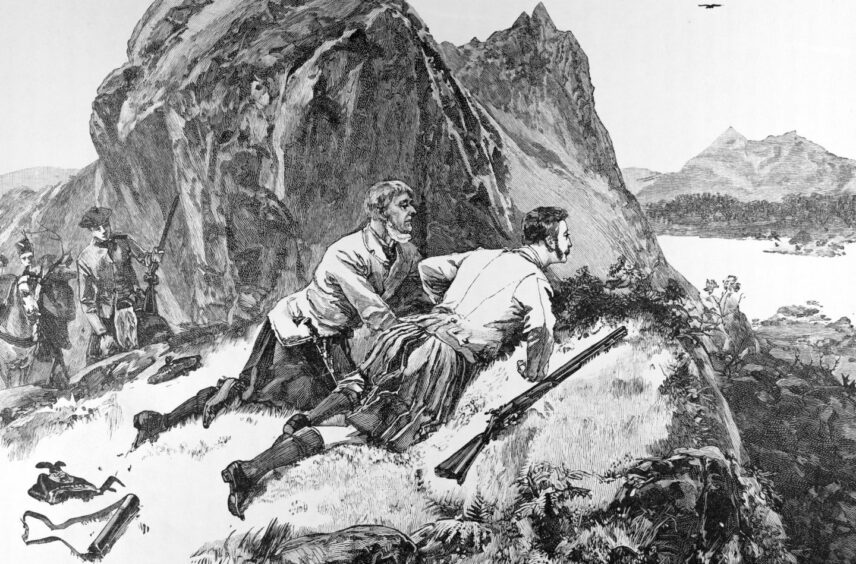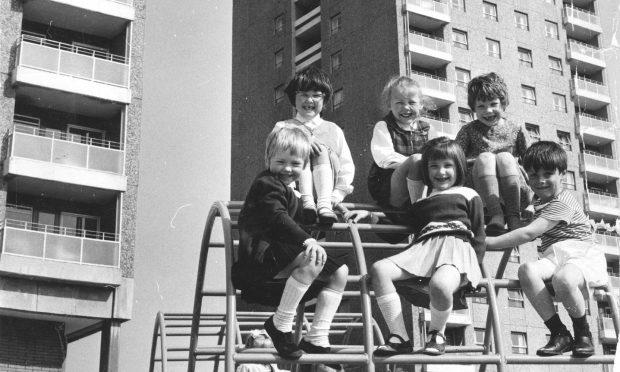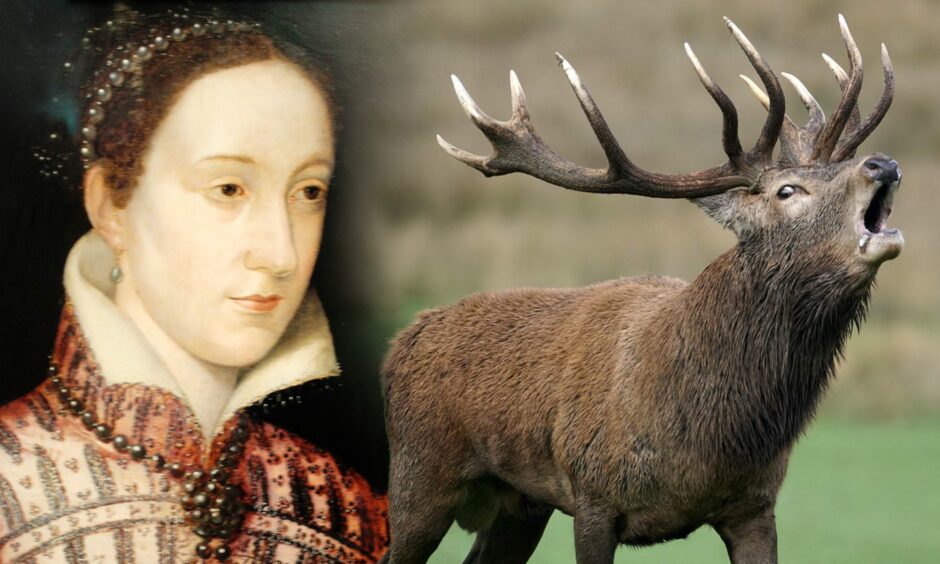
The stag hunting season opens in the Highlands today, July 1.
The sport of kings since time immemorial, deer stalking is a favourite pastime with King Charles and Prince William while they’re at Balmoral.
These days, it takes place amid strict safety protocols.
But more than four and a half centuries ago at a hunt attended by Mary Queen of Scots in the Highlands, it seemed nothing mattered more than bagging deer.
Even if it cost the lives of ‘two or three’ Highlanders.
When Royal Hunting with Mary Queen of Scots cost some Highlanders their lives
Picture the scene, from a vivid contemporary account by William Barclay, an author and law professor from Aberdeenshire.
He describes himself as a young man and present on the occasion.
It’s 1563 and the Earl of Atholl, one of Mary’s ardent supporters at the time, is hosting a Royal Hunting, as they were then called.
Two thousand stags have been rounded up from ‘the woods and hills of Atholl, Badenach, Mar and Murray.’
“These Highlanders use a light dress and are very swift of foot,” he writes. “They went up and down so nimble that in less than two months’ time they brought together 2,000 red deer besides roes and fallow deer.
“The Queen, the great men, and others were in the Glen [note: we’re not sure now which glen] when all the deer were brought before them, and believe me, the whole body of them moved forward in something like battle order.
“This sight still strikes me, and ever will, for they had a leader whom they followed close wherever he moved. This leader was a very fine stag, with a very high head.”
So far so good, Mary is duly impressed, indeed Barclay describes her as ‘delighted’ by the sight.
But all is not entirely well…
The Earl warns Mary that she is potentially in danger.
“She soon had occasion for fear,” writes Barclay, “upon the Earl, who had been accustomed to such sights, addressing her thus: Do you see the stag, who is foremost of the herd?
“There is danger from that stag for if either fear or rage should force him from the ridge of that hill, let everyone look to himself for none of us will be out of the way of harm; for the rest will follow this one, and having thrown us under foot, they will open a passage to this hill behind us.”
The bold Mary wasn’t listening.
“What happened a moment after confirmed this opinion for the Queen ordered one of the best dogs to be let loose on one of the deer: this the dog pursues, the leading stag was frighted, he flies by the same way he had come there- the rest rush after him and break out where the thickest body of the Highlanders was.
“They had nothing for it but throw themselves flat on the heath and allow the deer to pass over them.”
Mary later learned that several Highlanders, also referred to as ‘wild Scots’ in the account, were wounded and two or three had been killed outright by the stampede.
Her reaction isn’t recorded.
What seems to be more important is the success of the hunt.
Barclay says the whole herd would have got away had not the Highlanders “by their skill in hunting fallen upon a stratagem to cut off the rear from the main body.
Hundreds of deer and five wolves
“It was one of those that had been separated that the Queen’s dogs and those of the nobility made slaughter. There were killed that day 360 deer with five wolves and some roes.”
That’s alright then.
A famous quote associated with Mary emerged during this visit to the Highlands, noted by Randolph, the English ambassador to Scotland.
He wrote: “ [Hunting] was a rather rough and dangerous sport, but it did not deter the gentle Mary from engaging in it; she indeed seemed quite in love with the manner of life in the Highlands,” —and here’s the famous bit— “wishing she were a man that she might carry a broadsword and target, and know what it was to keep watch and lie all night in the fields.”
Inverness author Jennifer Morag Henderson knows a lot about Mary Queen of Scots from researching her book Daughters of the North, about the relationship between Mary and one of her ladies, Jean Gordon.
She throws some light on Mary’s gung-ho attitudes, which surfaced again in Inverness on the same trip.
“Mary was very taken with the Highland clans she saw in Inverness, particularly their plaids and dress,” Jennifer says.
“She was initially refused entry to Inverness Castle because of a row with the Earl of Huntly.
“When she was finally let in, the commander of the castle was hanged over battlements, as punishment for refusing her entry.
“Five more men from the castle guard were hanged, though some were given ‘mercy’, which may have been prison.
When the going gets tough…
“Meanwhile, Mary, Queen of Scotland went shopping, buying plaids for herself and some of her attendants.”
Her position seems to have come from naivety and ignorance about affairs of state in Scotland, particularly the Highlands.
Jennifer said: “Every so often you do have to remind yourself that these were very wealthy people, and that we really don’t hear much about the lives of ‘ordinary’ people.
“It was also a very violent time.”
The next Royal Hunting in the Highlands would take place in 1842 on Queen Victoria’s first visit to Scotland.
This was the first visit over the Border by a reigning British monarch since Charles I (1600-1649), apart from a short visit by George IV in 1822.
Not amused
In her journal Victoria records her delight at accompanying her husband Prince Albert deer-stalking, including her frustration when two men appeared walking on the road ‘which they had no business to have done’ and set the herd running off again and ‘the sport was spoilt.’
You can almost hear the stamp of a Royal foot at this point, though mercifully there are no accounts of any loss of life to the ‘wild Scots.’
More like this:
The extraordinary love life of Huntly noblewoman in time of Mary, Queen of Scots
